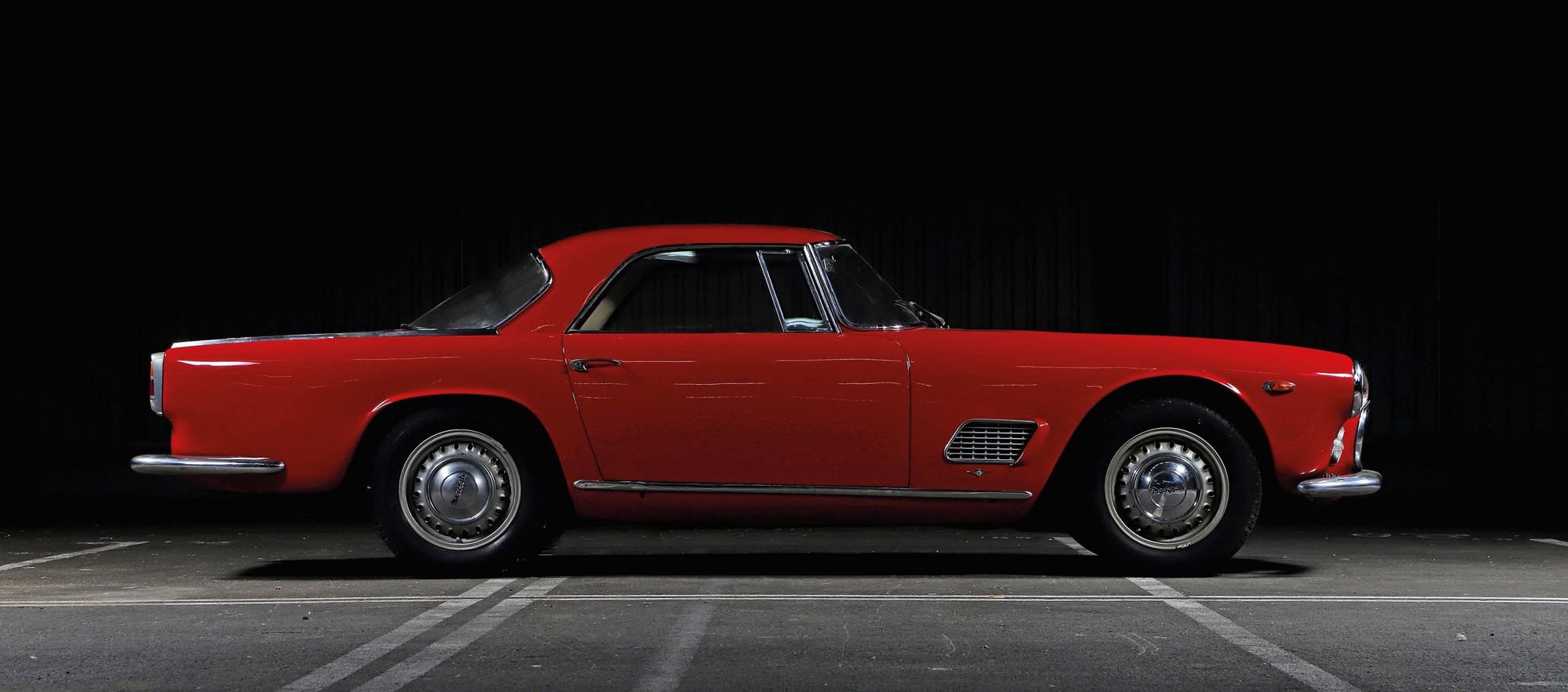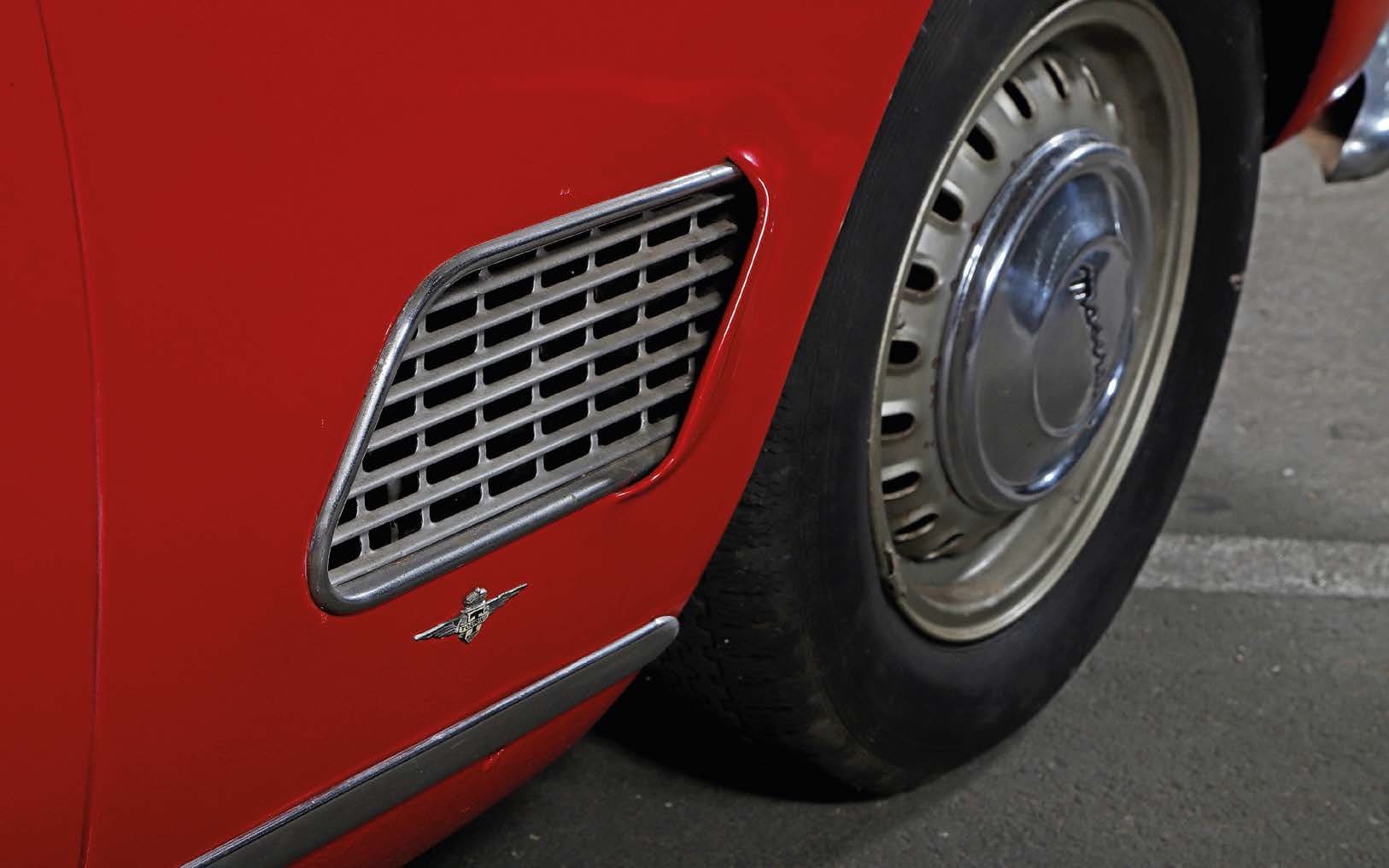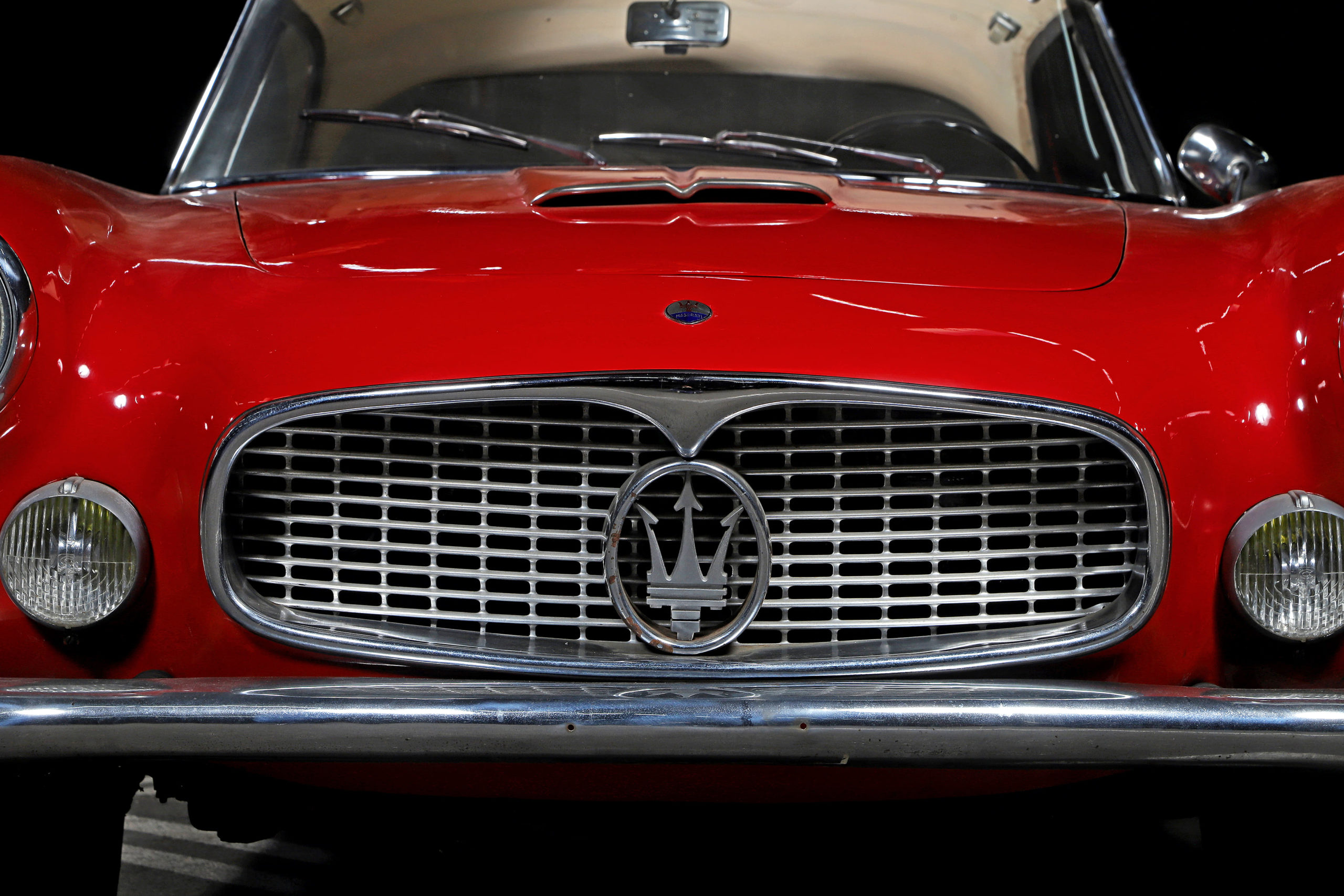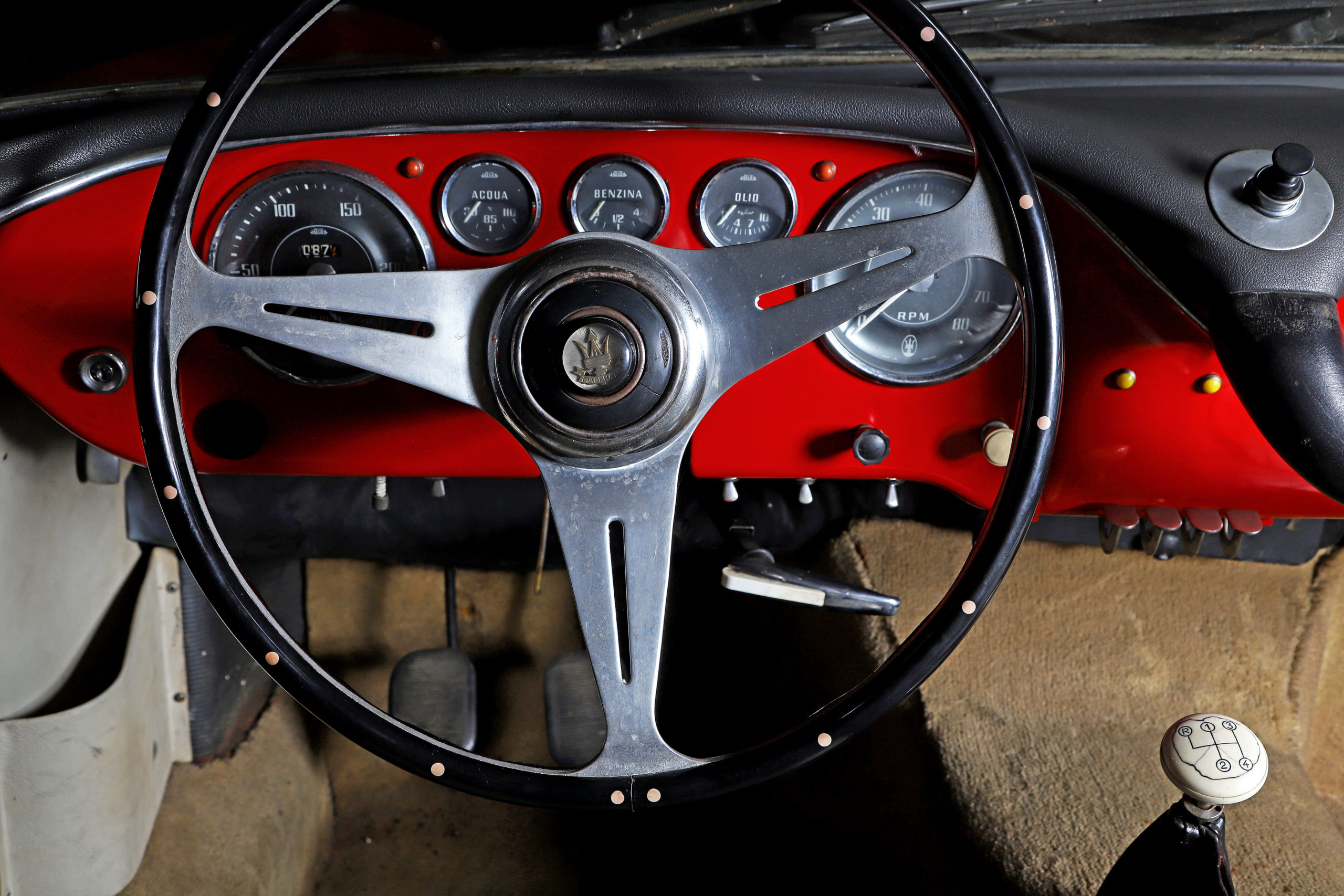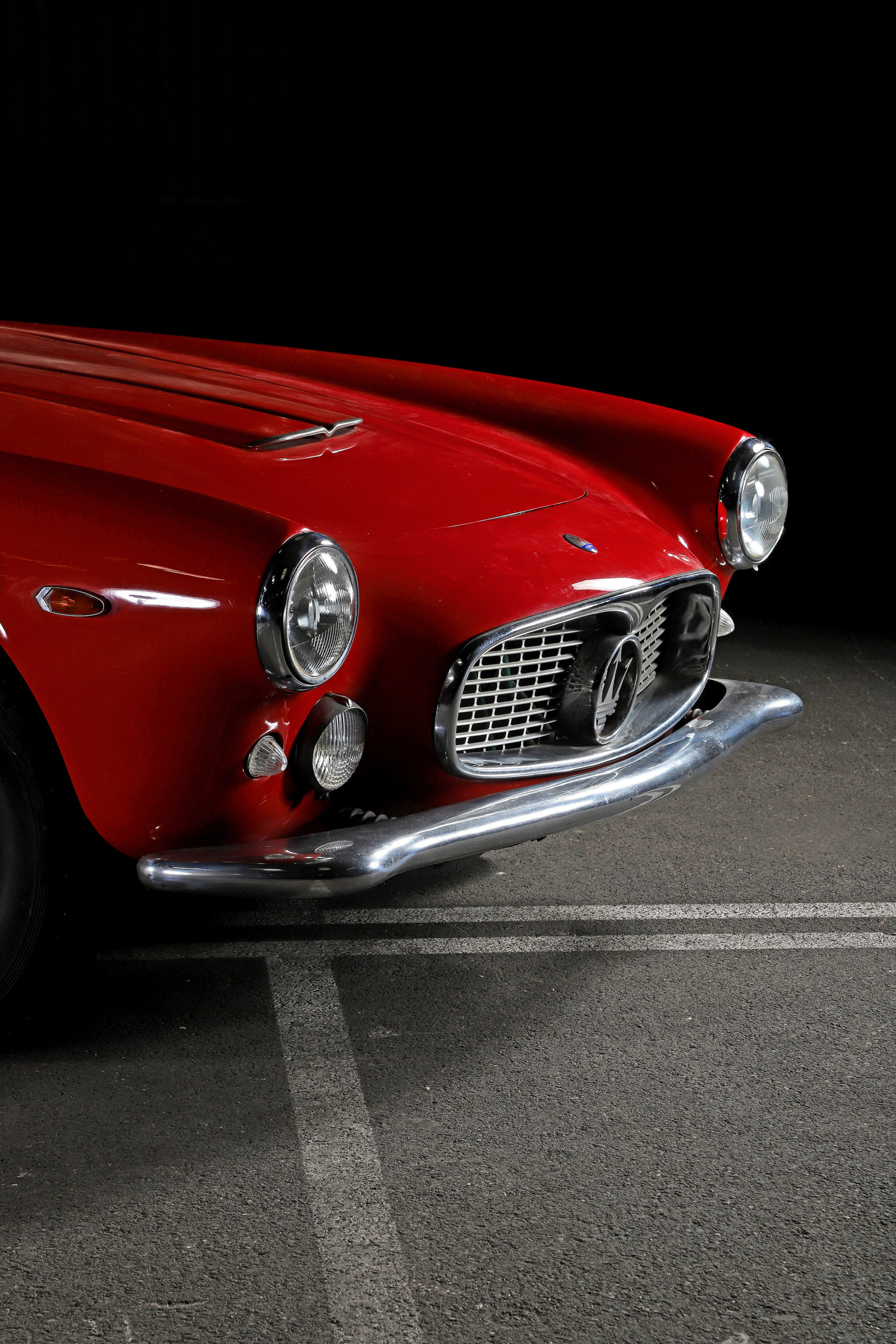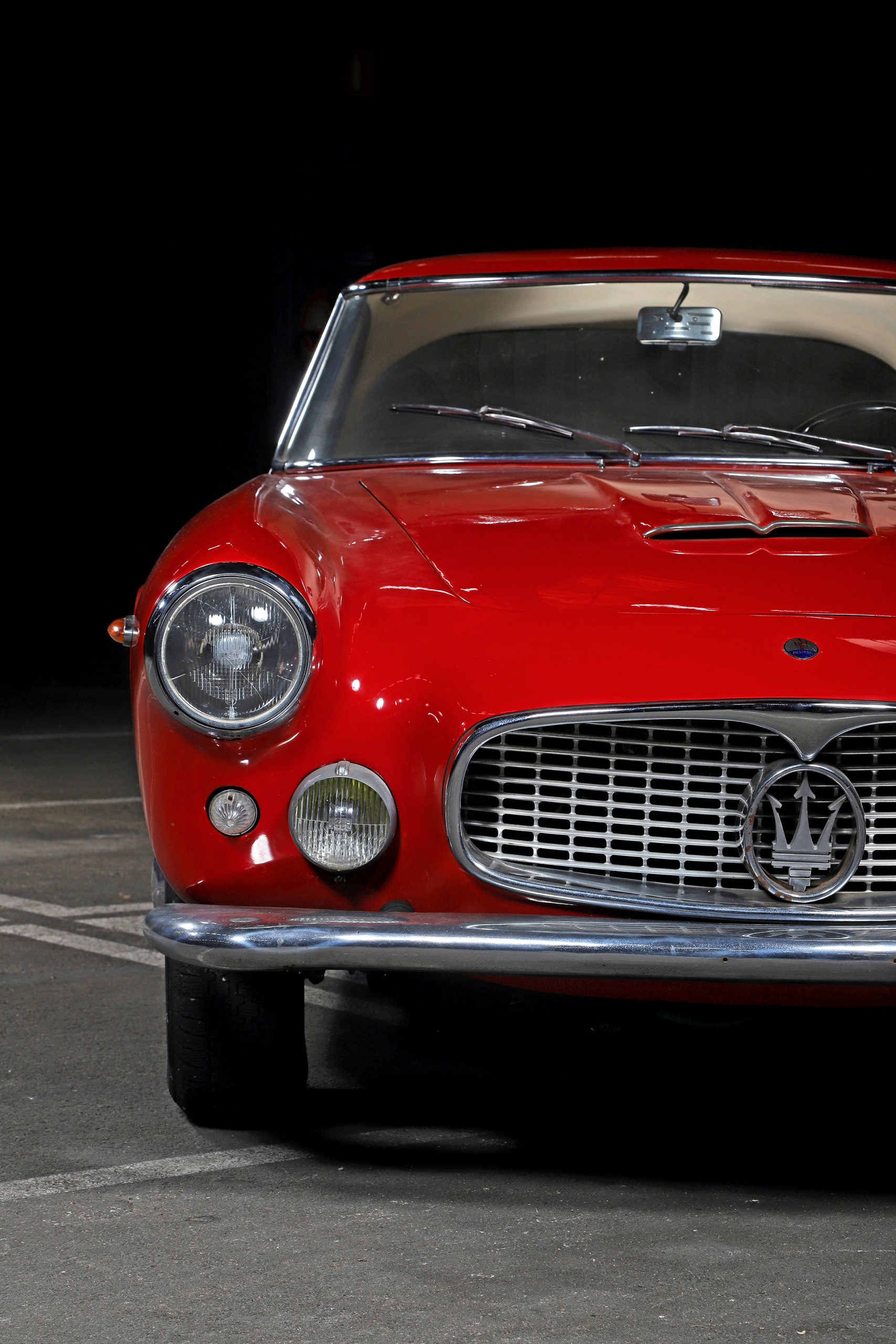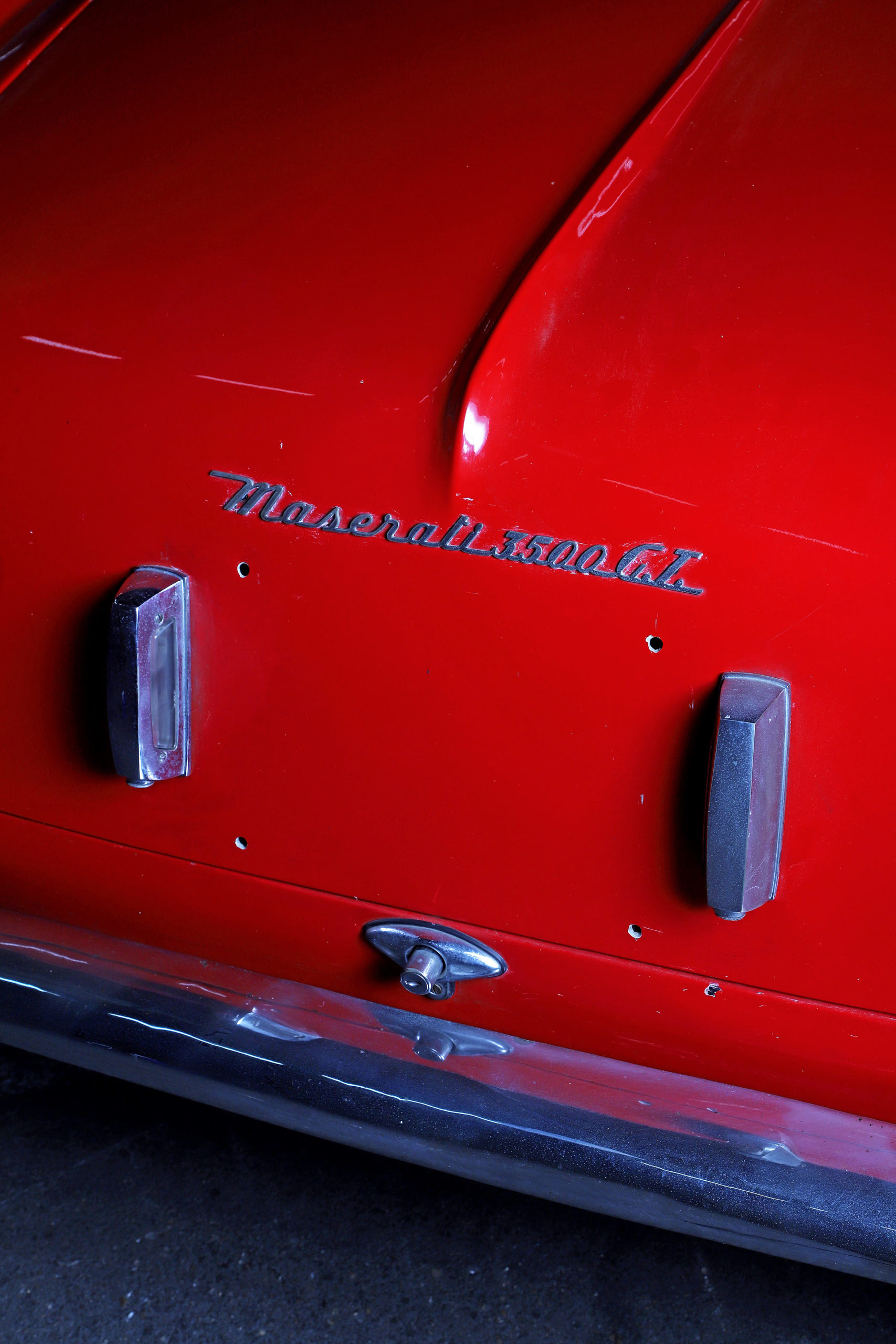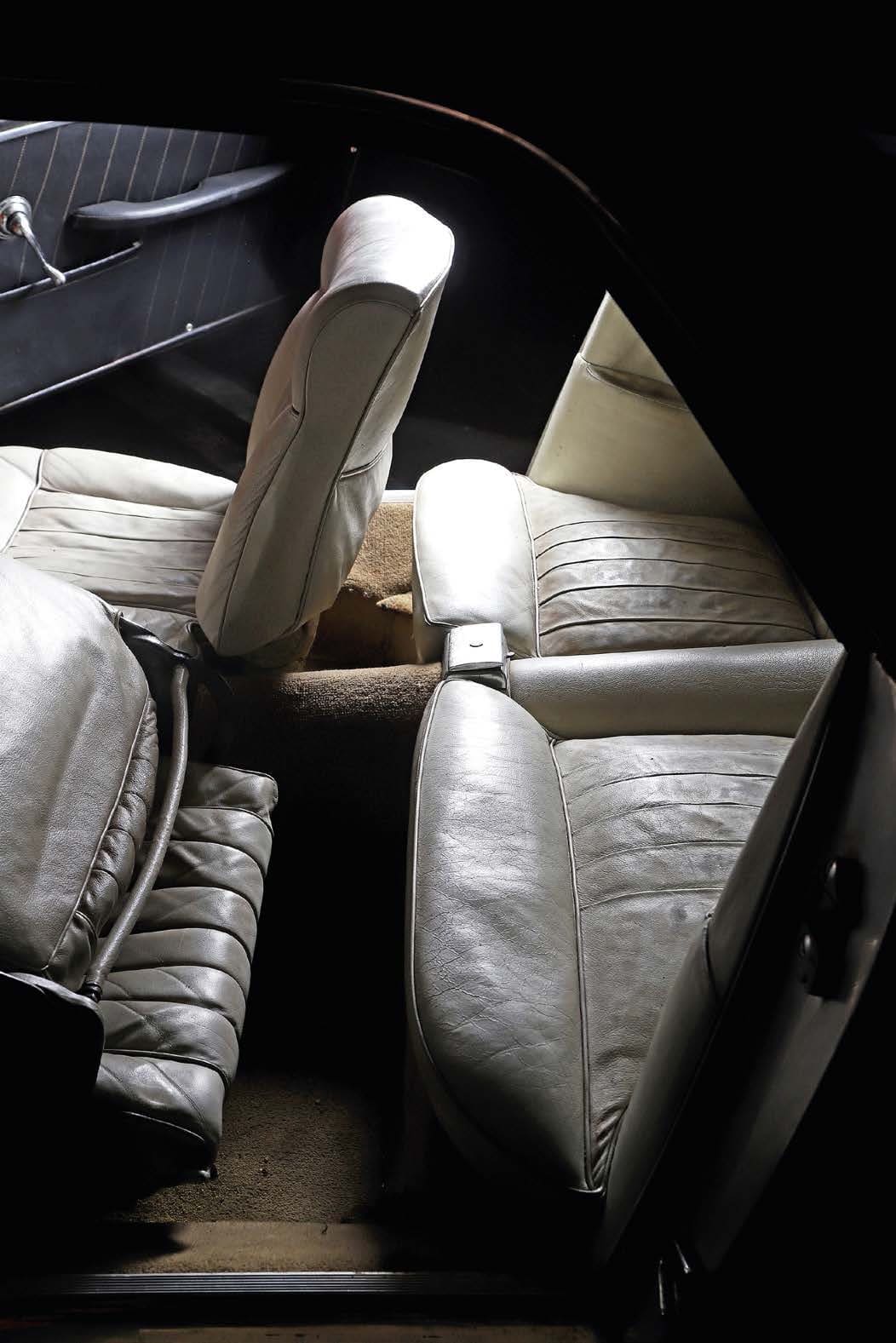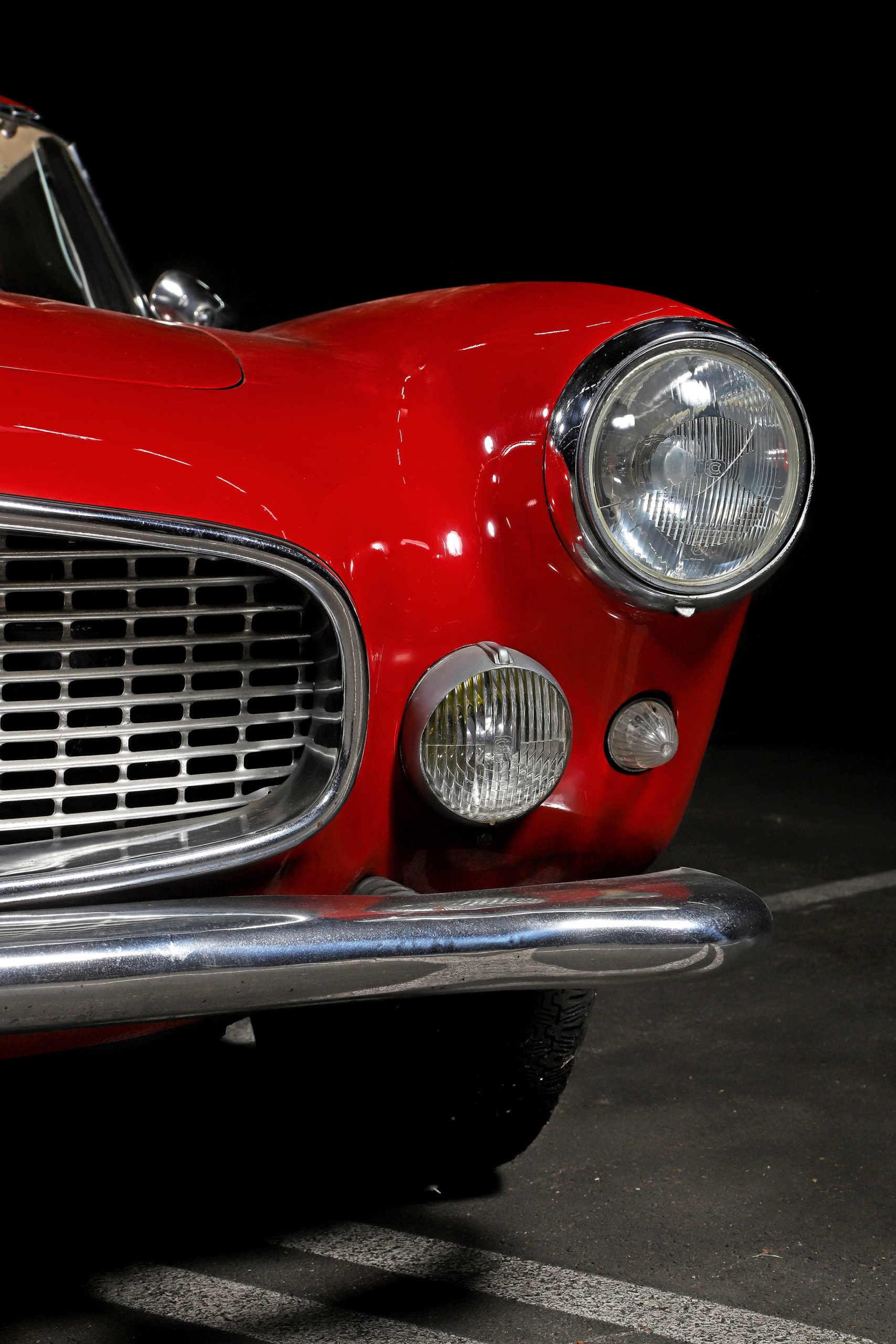Maserati 3500 GT - 1960
— The Touring designed elegant GT —- Model The model that saved Maserati from bankruptcy and brought it into a new era.
- History Our car was sold new in Italy where it has spent all its life before joining our collection.
- Mechanics Noble mechanics derived from the Maserati’s 350S 6-cylinder racing engine.
- Design A beautiful, classic yet elegant line, designed by Touring with its “Superleggera” process
- Comfort A spacious, elegant and luxurious 2+2 interior,
Despite an extraordinary racing season in 1957, with Fangio winning the F1 world championship once more at the wheel of a 250F, and the resounding success of the 450S racing car, Maserati was so bereft of money that it had to withdraw from racing. Its rescue came from the 3500 GT designed by Touring, which was such a commercial success that it literally saved Maserati from bankruptcy
The car that changed Maserati’s destiny
The 3500 GT coupe is widely seen as the first modern road Maserati land the one that saved the brand from bankruptcy.
In 1957, after winning the Formula 1 World Championship with Juan Manuel Fangio at the wheel of a 250F, and after finishing fourth in the World Sports Car Championship with the powerful 450S barchetta, which was by far the most successful season for the Trident brand, Maserati officially withdrew from motor sports to concentrate on Grand Touring cars.
This was a tough but necessary choice since Maserati was broke and had to find new sources of income. Competition was not fully abandoned though, since private teams would continue to defend its colours in numerous races.
Maserati had strong ambitions for its brand new GT road car; it had to be modern, refined and powerful, produced in numbers and able to compete with the great rival from Maranello, Ferrari. The target audience was mostly the US market, at the time by far the largest market for large and beautiful GT cars, especially Italian ones.
After only three cars assembled in 1957, a year of re-organisation for Maserati, production of the 3500 GT was really launched in January 1958.
To ensure its commercial success, Maserati set up a large network of importers in strategic countries. The gamble paid off, as from 1957 to 1964, 2,228 examples were produced, including 242 Spyder versions. With production costs four times lower than those of Ferrari, the 3500GT was certainly competitive.
Now in great demand, the 3500GT saved Maserati, and beyond that, brought it into a new era in its history and inspired the rest of its range.
©Aguttes
A superb line designed by Touring
In terms of design, the project for the soon-to-be-named 3500 GT was entrusted to Carrozzeria Touring, a master of the ‘Superleggera’ technique, in which a thin layer of aluminium was covering a tubular chassis, offering both lightness and elegant lines.
The 3500 GT’s body profile combines classicism, elegance and balance with a touch of sportiness. It houses a spacious and luxurious 2+2 cabin.
Several typical Maserati details give the car its strong personality, including the huge trident on the front grille, the ribbed bonnet air intake in the centre, the gills on the front wings and a choice of wheels between the famous Borrani spokes or the steel performance wheels.
A noble six-cylinder engine with competition genes
Giulio Alfieri, the renowned engineer, then technical director of the Modena factory, was in charge of the development of the sporty GT.
His choice was to work on an in-line 6-cylinder engine with two overhead camshafts and dual ignition of 3,485 cm3, from which the name of the car, 3500GT, was derived.
This engine was directly a derivative of the one used in the 350 S racing car to tackle the Mille Miglia. It therefore offered both the reliability required to cope with a very demanding race, and top performance worthy of a great GT. Fuelled by twin Weber carburettors, it produced 220bhp at 5500rpm, giving the 3500 GT a top speed of 230kph.
The 3500GT underwent a major evolution in 1961 when the Weber carburettors were replaced by the Lucas mechanical injection system (hence the name 3500 GTi) which increased power by 15 hp to 235 hp.
The four-speed gearbox, which was increased to five from 1961 onwards, was perfectly geared, precise and pleasant.
Discs at the front and drums at the rear provided the brakes.
©Aguttes
The Maserati 3500 GT from the ANNA LISA Collection
Our car was ordered on March 3, 1960 and delivered on July 20, 1960 to the Maserati dealership in Vicenza, Italy, where it was sold to a certain Mr. Valentino Malucelli.
Mr. Caroli Sergio then owned our GT in June 1965. It was then sold to an American citizen living in Italy, Mr. Myron Akerman on the 30th of November 1975. The car then had five successive Italian owners before joining the ANNA LISA Art On Wheels collection.
With 86,166 km on the clock, it seems our car was probably originally delivered in black, but its current red colour suits it very well.
The dilemma now is whether to leave this iconic, racy GT with its beautiful patina or to undertake a full restoration and provide it back with its original colour.
